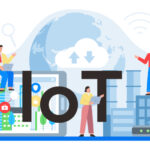
The Internet of Things (IoT) has revolutionized the way we interact with our surroundings by connecting everyday objects to the digital world. With Firebase Realtime Database, a powerful cloud-hosted NoSQL database, developers can seamlessly integrate IoT devices, enabling real-time communication and control. In this blog, we will explore how Firebase Realtime Database empowers IoT applications, its benefits, and the possibilities it opens up for connecting and controlling devices in a connected ecosystem.
Real-Time Communication
Firebase Realtime Database offers real-time data synchronization, making it an ideal solution for IoT applications. Devices connected to the database can instantly send and receive updates, allowing for seamless communication between different IoT nodes. This real-time capability is crucial for scenarios where immediate actions need to be triggered based on sensor data or user interactions.
Data Storage and Persistence
Firebase Realtime Database provides a flexible and scalable NoSQL data storage solution for IoT devices. It allows developers to store and retrieve structured data in JSON format, accommodating various types of IoT data such as sensor readings, device configurations, or user preferences. The database also ensures data persistence, enabling devices to access historical data even if they were offline during specific periods.
Device Control and Remote Management
Firebase Realtime Database facilitates device control and remote management in IoT applications. By integrating IoT devices with the database, developers can remotely monitor and control devices from anywhere with an internet connection. This capability enables functionalities such as turning on/off lights, adjusting temperature settings, or triggering actions based on specific events.
User Authentication and Authorization
Firebase Authentication, a part of the Firebase suite, can be seamlessly integrated with IoT applications to ensure secure access control. With Firebase Authentication, developers can implement user authentication and authorization mechanisms, enabling personalized and secure interactions between users and IoT devices. This feature is especially important for applications that involve controlling devices from mobile or web interfaces.
Scalability and Flexibility:
Firebase Realtime Database is built to handle high concurrent connections, making it suitable for IoT applications that involve multiple devices and users. It scales automatically to accommodate changing workloads, ensuring a seamless experience even during peak usage.
Analytics and Insights
Firebase Analytics can provide valuable insights into IoT device usage and user behavior. By integrating Firebase Analytics into IoT applications, developers gain access to metrics such as device adoption rates, user engagement, and feature usage patterns. This data-driven approach helps optimize the IoT application, identify potential issues, and make informed decisions for future enhancements.
Conclusion
Firebase Realtime Database serves as a powerful tool for connecting and controlling the Internet of Things devices in a connected ecosystem. With its real-time communication capabilities, data storage, device control, and scalability, Firebase enables developers to build robust and interactive Internet of Things applications. By integrating Firebase Authentication and Analytics, developers can ensure secure access control and gain valuable insights into user behavior.













































Recent Comments